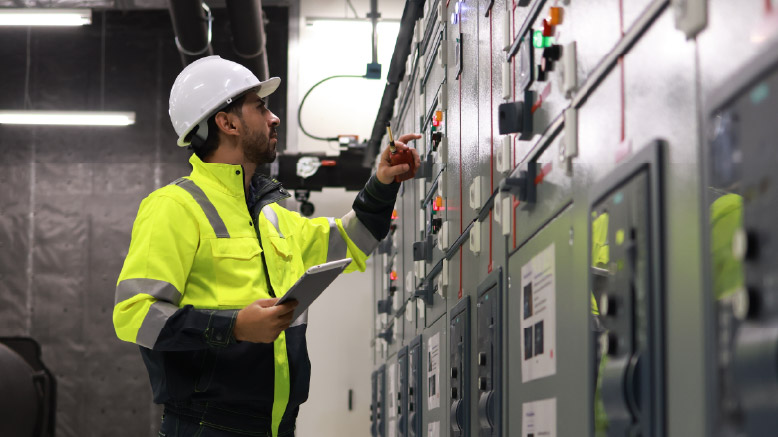— 7 min read
The MEP Lifecycle: How Contractors Can Benefit from Thinking Ahead


Last Updated Aug 7, 2025

Michael Spano
Solutions Engineer, Public Sector
Michael Spano is a Procore Solutions Engineer who partners with Public Sector agencies to deliver tailored technical solutions for their project management and construction processes. Michael brings a strong background in the construction and engineering industries, having spent time focusing on HVAC, plumbing design and managing a wide range of construction projects.

Diane McCormick
Writer
49 articles
Diane McCormick is a freelance journalist covering construction, packaging, manufacturing, natural gas distribution, and waste oil recycling. A proud resident of Harrisburg, PA, Diane is well-versed in several types of digital and print media. Recognized as one of the premier voices in her region, she was recognized as the Keystone Media Freelance Journalist of the Year in 2022 and again in 2023.
Last Updated Aug 7, 2025

From the beginning of a project, MEP contractors should be thinking about the lifecycle of their systems.
Prioritizing the lifecycle early in the process helps MEP trades influence design, select and position the proper equipment, conduct thorough documentation, establish a quality-control cadence, coordinate with facilities teams and even win post-construction maintenance contracts.
Paired with sophisticated systems maintenance and monitoring systems, all aspects of lifecycle position MEP contractors to maximize the lifespan and efficiency of their installations while doubling as risk mitigation and operational efficiency strategies.
This article explores the lifecycle stages of MEP and how to leverage contractor responsibilities during the lifecycle to extend system efficiency and lifespan, plus the impact of sustainability on lifecycle determinations.
Table of contents
MEP Lifecycle Stages
MEP lifecycle stages can vary between projects, but in general, the lifeycle follows six phases:
- Design
- Bidding and Procurement
- Construction
- Commissioning/Testing
- Closeout
- Operations and Maintenance
The MEP contractor’s level of involvement and influence depends on the project delivery method.
To put it in shorthand, they involve conversations and suggestions in design-bid-build, recommendations in design-assist and decision-making in design-build.
Strategic Responsibilities to Boost Lifecycle Success
Best practices that lay the groundwork for long-lived, efficient systems also mitigate risk and sustain operational efficiencies for MEP contractors.
Early Documentation Compilation
Throughout installation, MEP contractors work with manufacturers and sales representatives to gather warranties, operations and maintenance (O&M) manuals, and other important documents related to the material and equipment installed.
Operations and Maintenance (O&M) manuals will serve as essential reference documents for the facilities maintenance team, guiding both preventative and corrective maintenance throughout the post-construction lifecycle.

Michael Spano
Solutions Engineer, Public Sector
Procore Technologies
At closeout, a smooth handoff provides all the information the facilities team will need to operate the systems efficiently and cost-effectively through regular, preventive and corrective maintenance.
Prioritizing Quality Control
MEP contractors should prioritize quality control on projects for several reasons.
Improves System Longevity.
Quality control helps verify that systems are installed according to specifications and industry standards, reducing the likelihood of errors that could lead to system failure or inefficiency. This can help extend the lifespan of the systems, reducing the frequency and cost of repairs and replacements.
Reduces Risk of Rework
Identifying and addressing issues early in the installation process can prevent costly rework and project delays, saving time and money.
Improves Safety
Properly installed systems are less likely to fail catastrophically, which can prevent accidents and help create a safe environment for both contractors and building occupants.
Boosts Client Satisfaction
Delivering a project that meets high-quality standards enhances client trust and satisfaction, potentially leading to repeat business and positive referrals.
Go beyond OSHA regulations.
The Procore Safety Qualified program provides construction professionals with everything they need to know to create a culture of safety.

Providing Input on New Tech
Incorporating advanced technologies can extend the lifespan of MEP systems: Modern equipment often comes with improved durability and smarter functionalities, allowing for better maintenance and monitoring. MEP contractors can help future-proof their installations by leveraging their knowledge of cutting-edge solutions.
No matter the project delivery method, MEP contractors can offer alternatives based on their knowledge of available equipment and innovations. Their expertise can significantly enhance the overall performance and sustainability of a project — and by positioning themselves as knowledgeable partners in technology selection, MEP contractors can strengthen their reputation and competitiveness in the market.
Utilizing Building Information Modeling (BIM)
At a project’s end, contractors are responsible for creating 3D models that match exact installations. This as-built information, entered into building information modeling (BIM) depictions, can feed into the creation of a digital twin.
With this digital replica, smart software can run virtual "what-if" scenarios to determine the longevity, efficiency, and environmental impacts of any proposed system changes.
Collaboration with Design Teams
Collaborate with the design team on equipment selection and placement. The design and procurement phases provide time to assess the future availability of commonly needed parts, as well as the processes and equipment positioning that simplify maintenance.
Value engineering in collaboration with the design team helps guard against procuring equipment that’s approaching obsolescence and faces shortened lifespan and usability.
Systems that allow easy swap-ins of replacement parts extend lifespan by preventing the need to replace entire units. In clash detection, the spatial coordination capabilities of BIM help prevent any repositioning from unintentionally blocking accessibility.
Building Strong Manufacturer Relationships
It's also important to build and maintain relationships with manufacturers’ representatives. With their reputations on the line, manufacturers have a stake in the longevity, efficiency, and performance of their products.
Their updates on innovations offer valuable insights for MEP contractors to share with designers and facilities teams.
Since the design phase sometimes takes place years before actual installation, it’s critical to establish clear MEP system performance and efficiency requirements, otherwise it’s difficult to keep pace with evolving standards. This also requires that both designers and contractors stay informed about emerging technologies and maintain close relationships with manufacturers to anticipate future equipment needs.
Michael Spano
Solutions Engineer, Public Sector
Procore Technologies
Effective Commissioning and Testing
Commissioning and testing refer to the processes involved in verifying a building's systems are designed, installed, tested, operated and maintained according to the operational requirements and performance criteria of the project owner or final client.
Stringent commissioning establishes MEP equipment’s functionality, ready to perform as designed. Getting ahead of quality control and testing before final commissioning helps avert costly surprises.
Additionally, a proactive approach to commissioning and testing allows for a smoother transition of system operations to the facilities management team. Clear documentation and validated system performance ensure that the end-users can efficiently operate and maintain the systems.
Creating a Post-construction Maintenance Plan
Taking control of maintenance creates a clear line of succession.
Pro Tip
Hand over spare parts to the facilities team: MEP contractors are usually required to hand over spare parts for their installations. Closely monitoring and organizing this “attic stock” gives the facilities team a head start when it’s time to install replacement parts, and it assures availability even if parts become scarce.
The MEP contractor who installed the equipment and knows it best becomes responsible for its upkeep and efficiency, committing to standards- and warranty-based delivery of preventive and corrective maintenance.
Offering a post-construction maintenance plan demonstrates the contractor's commitment to quality and client service. Providing ongoing support and ensuring the systems' reliability also can help contractors build stronger relationships with clients.
Sustainability and Efficiency Considerations
The demands of energy efficiency and sustainability impose a heavy burden on highly sophisticated systems, and steps taken to extend lifecycle can also benefit efficiency.
The outcomes of climate change, including intense rainfalls and higher temperatures, are factoring into equipment selection. Many pieces sit outdoors, exposed to the elements. Those on rooftops, especially, require the life-extending protections provided by anti-corrosive materials and coatings.
Historical weather data traditionally informs equipment choices, but projections of future average temperatures, whether rising or falling, can also be helpful for right-sizing heating and cooling loads, preventing them from becoming ineffective or worn out in a few short years.
Extending lifespan also relies on calculations of running time and speed that minimize wear and tear, preventing burnout by running systems at best efficiency point (BEP) rather than constantly pushed to their limits.
And because the building management systems (BMS) and building automation systems (BAS) will be monitoring and controlling MEP installations, MEP contractors are usually responsible for hiring sub-tier controls contractors.
That makes MEP contractors the linchpins for BMS/BAS controls and monitoring that optimize system lifespans and efficiency. Carefully managing controls contractors for schedule, quality controls, and commissioning ensures that projects stay on track and installations are performing their critical functions from Day One.
Creating Lasting Success Through the MEP Lifecycle
Long before MEP contractors complete a project, they can set up their systems for success. A lifecycle-oriented mindset contributes to safer and more cost-effective operations, a stronger brand, and quality installations that last for years.
Emphasizing early planning, strategic collaboration and the integration and use of advanced technologies optimizes operational efficiencies but and helps make sure installations remain adaptable to future innovations and environmental demands.
This forward-thinking mindset can help MEP contractors secure a competitive edge in the market and uphold the integrity and reliability of the systems they implement.
Was this article helpful?
Thank you for your submission.
100%
0%
You voted that this article was . Was this a mistake? If so, change your vote
Scroll less, learn more about construction.
Subscribe to The Blueprint, Procore’s construction newsletter, to get content from industry experts delivered straight to your inbox.
By clicking this button, you agree to our Privacy Notice and Terms of Service.
Thank you!
You’re signed up to receive The Blueprint newsletter from Procore. You can unsubscribe at any time.
Categories:
Written by

Michael Spano
Solutions Engineer, Public Sector | Procore Technologies
Michael Spano is a Procore Solutions Engineer who partners with Public Sector agencies to deliver tailored technical solutions for their project management and construction processes. Michael brings a strong background in the construction and engineering industries, having spent time focusing on HVAC, plumbing design and managing a wide range of construction projects.
View profile
Diane McCormick
Writer | Procore Technologies
49 articles
Diane McCormick is a freelance journalist covering construction, packaging, manufacturing, natural gas distribution, and waste oil recycling. A proud resident of Harrisburg, PA, Diane is well-versed in several types of digital and print media. Recognized as one of the premier voices in her region, she was recognized as the Keystone Media Freelance Journalist of the Year in 2022 and again in 2023.
View profileExplore more helpful resources

Low-voltage Systems: A New Frontier for MEP Contractors
From design through commissioning, low-voltage system designers and the MEP trades are colleagues. They work together to provide the systems that make buildings safe, connected, comfortable, efficient and equipped for...

Comfort Mood: Making MEP Central to Occupant Comfort
In many post-COVID-19 projects, occupant comfort has transitioned from a “nice to have” to a “must have.” It’s infused into collaborations from the earliest phases of design and preconstruction. That...

Retrofitting Aging Infrastructure: 5 Essentials for Managing MEP Risk
MEP contractors help preserve aging infrastructure by bringing systems to contemporary standards in sustainability, comfort and accessibility. Although the opportunities are unique, retrofits of existing buildings present known obstacles and...

The Top 5 MEP Challenges of Data Centers
Data centers are unique builds that come with unique challenges. MEP contractors stepping up to build data centers are sure to encounter the complexity of systems and the demands of scalability,...
Free Tools
Calculators
Use our calculators to estimate the cost of construction materials for your next project.
Templates
Find a template to help you with your construction project tasks.
Material Price Tracker
Get the latest U.S. retail prices and view historical trends for common building materials.
Glossary
Explore key terms and phrases used in the industry.
